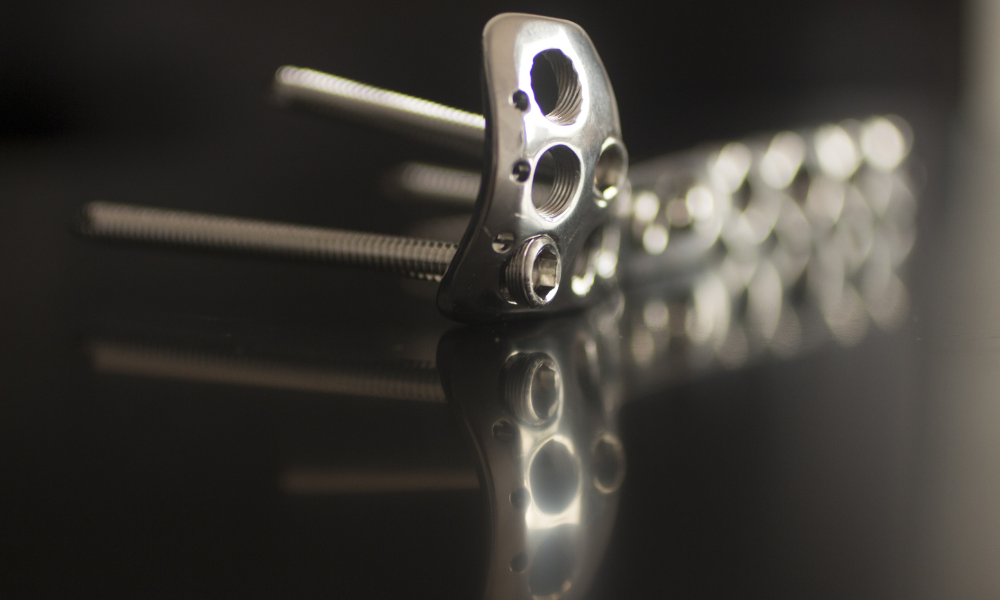Resources
Surface Texture and Its Impact on Orthopedic Implant Performance

Hip replacements, knee prostheses, bone fixation devices, and other orthopedic implants are designed to restore function and alleviate the pain experienced by patients with musculoskeletal conditions. However, when it comes to the performance of these implants, surface texture plays a pivotal role in determining their success and longevity within the body.
Enhancing Osseointegration
One of the most critical factors for successful implant performance is osseointegration—when the implant becomes firmly anchored to the surrounding bone tissue. Surface texture plays a vital role in promoting osseointegration. Implants with rough or porous surfaces provide more surface area and micro-topography for bone cells to attach, proliferate, and differentiate into mature bone tissue. The right surface texture leads to a stronger and more stable connection between the implant and the bone, which reduces the risk of loosening over time.
Improved Mechanical Stability
Surface texture directly affects the mechanical stability of the implant. Roughened textures, achieved through sandblasting, plasma spraying, or 3D printing, can create a strong physical interlocking between the implant and the bone. This interlocking helps prevent micromotion that could lead to implant failure. In contrast, implants with smooth surfaces are more prone to slipping and loosening, which can lead to pain and the need for revision surgery.
Promoting Tissue Integration and Healing
Implants with precisely engineered micro- and nano-textures can guide the attachment and alignment of cells, such as osteoblasts (bone-forming cells) and fibroblasts (connective tissue cells). This helps promote faster tissue integration and accelerates the healing process. Additionally, these textured surfaces can encourage the formation of a fibrous tissue layer that acts as a cushion between the implant and the surrounding tissue, providing additional support and reducing the risk of inflammation.
Minimizing Biofilm Formation and Infection
A leading cause of implant failure is biofilm formation and infection. Implants with optimized surface textures can deter the attachment of bacteria and reduce the risk of infection. Advanced surface treatments, such as antimicrobial coatings or surfaces with specific topographies, can create an environment that is less conducive to bacterial colonization, further enhancing the implant’s long-term performance.
Enhancing Load Distribution
Implants with rough or textured surfaces help distribute mechanical loads more evenly across the bone-implant interface, minimizing stress concentrations that could lead to bone resorption or implant failure. This is especially important for weight-bearing implants, such as hip and knee prostheses, where proper load distribution is critical for long-term success.
Customization and Advanced Manufacturing
Advancements in 3D printing enable the creation of highly personalized medical implants. Recent advancements in additive manufacturing (3D printing) are transforming patient care by creating customized implants with complex surface textures tailored to an individual’s needs. These textures can mimic the fine details of natural bone structures, which enhances both osseointegration and mechanical stability. This level of customization can enhance healing, reduce complications, and lower the likelihood of future surgeries.
Optimize Surface Texture and Implant Performance with iFyber
By carefully engineering the surface texture of implants, manufacturers and researchers can develop orthopedic solutions that provide greater longevity, improved functionality, and better overall patient outcomes. iFyber’s cell and tissue culture services, along with their histology, imaging, and chemical analysis capabilities, provide invaluable support for R&D teams seeking to optimize surface textures. As the field continues to advance, the importance of surface texture in orthopedic implant design will remain a key focus for innovation and success in patient care. To discover how iFyber’s relationship-focused approach can support your company’s R&D team, contact us today to discuss your needs.
